

Fun Science for 5-6 Year Olds

You can find them here and we would want you to make this page favorite to check out and help your kid understand science. The best thing you could do is, quickly subscribe to our page and we will send you all activities at once it gets uploaded.🙂
Fun Science Activities for 5 & 6 Year Olds

Egg in Skittles and Vinegar Experiment: What Happens When You Put Egg in Skittles?

How to Use Iron Filings to See Magnetic Field

How to Make Crystal Egg Shells

How to do an Air Pressure on Water Experiment for Kids

Dancing Ghosts : Halloween Balloon Static Electricity Activity

How to Make Violet Crumble / Honey Comb (Edible Science for Kids)

Balloon and Pin Experiment (Air Pressure Experiment for Kids)

How to Make DIY Magnetic Compass

Root Beer Floats – Explore States of Matter

How To Make a Balloon Hovercraft

Invisible Ink Experiment (With Lemon Juice & Salt Solution)

Why does Water Bend with Static Electricity (Worksheets Included)

How do you put a Needle Through a Balloon Without Popping

Amazing Paper Cup Rocket Craft : Jumping Bird DIY

How to Make Glowing Water : Science Experiment

How to Make Oobleck (A Perfect Non Newtonian Fluid)

Floating Egg Science Experiment ( Using Salt, Sugar & Saline Water)

Cool Watermelon Science Experiments for Kids

Tornado in a Bottle : Best Weather Science Activity

Skittles Rainbow : Dissolving Dye Science Project

How to Make a Candle Seesaw? Balancing Act Experiment

Exploring Veins Patterns in Leaves – Kids Painting Activity

Burning Candle Rising Water Experiment

Balloon in a Bottle : Air Pressure Experiment

Life Cycle of Silkworm : 3D Model for Science Fair Project

Egg and Toothpaste Experiment (Learn Importance of Brushing Your Teeth)

How to Make a Square Bubble

How to Build a Balloon Rocket (Balloon Rocket Race)

How to Make 3D Ladybug Model (Lifecycle Included)

How to Draw on Water Using Dry Erase Markers (Dancing Drawings)

Santa’s Christmas Timer : Fun Board Game to Teach Time

Walking Water Experiment – Teach Capillary Action to Kids

Walking on Eggs : Measure the Strength of Egg Shell

How Strong is an Egg Shell? Strength of Eggshell Bridge
Rainbow Rubber Egg Science Experiment
Easy Experiments to Introduce Magnetism to Kids

DIY Pully – Physics Fun Experiment for Kids

DIY Crystal Snowman : Christmas Tree Ornament

Respiration in Plants – Live Proof

DIY Robotic Articulated Hand
Candle Under Glass Experiment

DIY Borax Bouncy Ball -Experiment

DIY Borax Crystal Flowers

Can You Make a Crystal Candy Cane? (Christmas Science Project)

Glowing Water Beads Experiment for Kids

Easy Volcano Eruption Experiment for Kids (3 Methods & Beautiful Results)

Interlocking Crystal Hearts : Grow Your Own Crystals

Sugar Glass : Edible Science for Kids

Questacon (Australia’s National Science and Technology Centre) – Place to Visit With Kids
DIY Amazing Crystal Snowflakes ( Science Project for Kids)

Science Behind Making Butter

How to Start Fire with a Magnifying Glass?

Glow in the Dark Ice Cubes – Sensory, Edible Science Activity

Refraction of Light : Play & Learn Activity for Kids

Density Science for Kids : Create Fireworks in Water & Oil

How to Make a Lava Lamp at Home
STEM Toys for Girls : 2019 Topmost Toys for Curious Girls
Engineering Toys for Girls : 2019 Ultimate List for Little Geniuses

Geomag Panels – Review

Why Do Flowers Change Color in Food Coloring – Experiment for Kids

Book Review : Ivy and Beak Break the Fossil Record

Build Your Own 3D Structure : STEM Challenge for Kids

Spiny Leaf Phasmids : Secret Life of Pets (DIY Enclosure Steps!)

Review: Magic Science for Wizards Only Science Kit

DIY Christmas Tree Magnet Maze (Fun Science Game)
Book Review of Ada Twist, Scientist

Wildlife Habitat Port Douglas : Nature Learning for Kids

Swirling Milk Experiment (Magic Milk Activity)
DIY Christmas Tree Bubble Wand {Learn bubble physics}
Catapult STEM Project – DIY Catapult for Kids
Coloring Activity – Girl as a Scientist
Make Mushroom Monkeys : Spore Science Craft
Sea Life Sydney Aquarium – Perfect Excursion for Kids
Upcycled Catapult – STEM go green DIY Challenge
Spore Printing with Mushroom – Botany Lesson with Fungi
How to make Curds and Whey

Naked Egg (Dissolving Egg Shell) Experiment
How to Make Heart Shaped Bubble Wand
Easter Egg Bubble Wands

Magnet Maze Game Designing Activity – Learn Science and Art
Book Review of Sticker Dolly Dressing Dream Jobs (Usborne Activities book}
DIY Fridge Door Marble Run Using Magnets
Comparing Different Seeds – An Activity About Nature Science
11 Experiments That Failed Book Review
Delightfully Fizzy Sherbet
Want even more science fun?
At this moment if you are looking for more activities, then read below. I have collected some for your 5 – 6-year-old kids. Try this on weekends or holidays. They are easy at the same time knowledgeable.
- Friction and inertia the coin way – It’s the beginning to teach the fundamentals of science and you can quickly help students understand friction and inertia. All you need is coins, dinner knife, and a table. See how and when coin topples and learn Newton’s first law. For more details Steve Spangler Science .
- The connection between color and taste – Have you ever thought about this? Does food colors have a taste? Then why does juice made from the same fruit but added different food color taste different? Lets us find this out with fruit juice, and three different food colors using the experiment described in the link given below. For more details Science Buddies .
- Ice as a magnifying glass – It is now possible to make a magnifying glass just out of ice cubes. All you need is to freeze water and make it ice. Teach refraction and magnification through this experiment. Get ready with things to be witnessed as magnified with your new magnifying glass. For more details Schooling a monkey .
- Color changing slimes . Yes, in a thermochromic way and you can imagine how much excitement it will add to your kid. Every kid loves to play with slime and in fact, they are crazy about it. Source: Left Brain Craft Brain.
- Earthquake experiment – Two cloth strips and earth’s crust will allow you to teach children about the earthquake. Let kids know about the critical earthquakes with a simple experiment.For more details The owl teacher
- Life Over Cs has given the best way to let your kid explore density . Allow her to look for the items in the pantry to try this experiment. Layered potions they are.
- Water Clock – In the digital world, kids might not have heard about the water clock. But it is a clock similar to sundial which helped ancient people to know the time. This can be made at home with just 2 water bottles. Drill, timer, glue gun, straw, and a sharpie marker. Let them enjoy finding the time on their own looking at the flow of water from one bottle to another. For more details Teach beside me .
- Buggy and Buddy has presented this great craft idea in science allowing your 5 – 6-year-old to make chromatography butterflies getting separated with markers.
- Even more, is available on chromatography. You can check Kids Minds that have just not bought five exciting ways to work around with chromatography . The best part is the sprinkles one!
- Surface tension with a paper clip – Surface tension concept is very important in science and few kids find it confusing. So let us do this experiment. Use some paper clips and place them in a bowl of water and it will sink. Now, take them out and bend it to make them in shapes to show them floating in the water. Do you want to teach kids in the right way? Continue reading from the link below. For more details Raising lifelong learners .
- There’s Just One Mommy has changed the color of grape juice with simple chemistry . Now you can also try. Making parachutes with egg is now possible. So do not worry about remaining Easter eggs. This great experiment is posted by JDaniel4’s Mom.
- Slime and magnet – what is the connection – Teaching magnetism is a really difficult task for teachers. But you can show the magnet and practically explain to make kids understand better. Does liquid get attracted to a magnet? No, I am not joking this magnetic slime, does it? Glue and iron oxide powder are the two main ingredients for making this magic. For more details Frugal Fun4 boys
- Concept of light, symmetry, and reflection – Easy way to teach the main science concept light and reflection is with the help of kaleidoscope. It is fun to make one with kids and with inexpensive things each kid can have one. Just collect tissue roll empty, thick sheets, white cardstock, bending straw, scissors, and cutter. Let’s explore the way to make kaleidoscope in this section. For more details Buggy and Buddy .
- The Chaos and the Clutter had really made a great and simple fold mountain . This is really amazing and the foolproof way to demonstrate earth science for kids.
- JDaniel4’s Mom is back again with a great experiment to show how to control water flow ?
- Laughing Kids Learn has shown the easiest way of using science and now it is easy to blow balloons .
- For the art loving kids, Rhythms of Play have given an excellent opportunity. Yes, the experiment that explains about mediums and their resistance to watercolors . Also, the various effects are discussed.
- Solvent, solute – Solubility – Children must understand about solute and solvent to learn about solubility. Instead of orally explaining take these things to the class and make children witness solubility. The solvent is the liquid and solute is the material either a solid, liquid or a gas that will dissolve in a solvent. With markers, water, alcohol, and vinegar you can help children understand solubility. For more details Around the kampfire .
- Weight with paper chain – This experiment will teach kids about measuring liquids, weight management and how to make a strong paper chain. All you need is a bucket, measuring jar, and newspaper. Kids can experiment themselves. But you need to help them hold the bucket as it will become weight when water is added to it. For more details More than a worksheet .
- Now teach weather, storm with this simple experiment presented in the following sites. Preschool Powol Packets , Frogs and Fairies , Life Over Cs . Each one has their way of explaining and you must individually check them out.
- Look We Are Learning has demonstrated an easy experiment about heat conducting materials . Feel glad that you don’t need to spend a penny on these experiments as they are available at your home.
- It is now very easy to make clouds . Yes inside a glass or a jar. Wondering how? Follow the simple steps explained by There’s Just One Mommy and your done.
- Temperature and Thermometer – How does thermometer work? What is cold and hot? How to measure them? These questions can be answered easily with this experiment. Ask kids to place their hand into a bucket containing cold water. Not bare hand but with a ziplock. Likewise, let them try with gloves, etc and explain the changes they feel. For more details Third Grade Thinkers .
- Jelly experiments are fun always they are generally called as Jello in Canada and America. The Chaos and the Clutter have made this exciting idea and you can follow too.
- Light and refraction experiment at home with kids is a great way to teach them science. Don’t look for things outside your bag. Look, We’re Learning! Has taught this trick.
- How to bulb plants grow . Watch this Buggy and Buddy experiment. Enjoy witnessing the roots and the entire plant growth.
- Force and motion – Push and pull is all about motion and force. Let kids have fun with this marshmallow shooter and learn about force. Need a paper cup, balloon, and that’s all the experiment can start in a few minutes. For making marshmallow shooters click the link given below. For more details The teky teacher .
- Designing a floating Lego boat within no time has been made possible by JDaniel4’s Mom. Then you can also do it and also understand the duration it can float, its weight holding capacity, etc.
- This is a monster experiment and it inflates on its own. Sounds interesting? Check this Artsy Momma’s idea and rock this years Halloween party.
- The hot chocolate idea for this winter. Creative Family Fun has presented this food science and you can test variables as well as record results.
- Stop motion movie – You can now make your kid’s movie makers. Yes, believe it is possible with this stop motion movie making concept. This little is doing the same from scratch. You can follow that and educate your kids to try. It is not a one day work off course making a movie is not possible in just one day. So you can start today and train them as project work. For more details, Happiness is here .
- Find the density of all vegetables and fruits by following KC Edventures healthy experiment.
- NutureStore encourages kids to make rain gauge at home. It challenges that you can cross check the reading with the weather report.
- Using marshmallows now Artsy Momma and her toddler team has made constellation lesson easy by making some crafts.
- Balloon Rocket – This experiment will teach about how shape and size influence speed. Simply a thread, drinking straw, balloons of different shape and size must be used to construct this experiment. This can be made in no time and experimented indoor or outdoor. Let kids have all fun but learn about speed in lightning speed. For more details Kiwico .
- Mess for Less has posted an experiment where you need not mess with ice but pick them with string . Astonishing? Find out how and do them without fail.
- Every color disappears with Mess for Less bleach experiment. Beware go with old clothing to do this magical experiment.
- Balloon explaining the concept of pressure, CO 2 – In this video, you can educate kids about pressure using a balloon. Next is to fill the balloon with baking soda and vinegar. The third experiment is to fill with water and check if it will pop when the flame is placed under it. Interesting concepts can be taught in an easy way. For more details Youtube 3 balloon experiments .
- Now making a tornado at home is simple. Can you imagine how gigantic a tornado will be? Try Planet Smarty way and Artsy Momma way.
- Again NutureStore has presented a creative experiment to make with ice. Yes, colorful ice art with salt .
- Making stethoscope at home is the first step to make your little one a doctor. Check the idea posted in Fantastic Fun and Learning.
- Rock lesson – With salt and water, it is now possible to make rocks. This lesson will teach about rock and its types. Fill a jar with water and add salt to it. Mix them and tie toothpick to string both ends and keep it on the jar. Salt crystals will form over time. For more details Science kids .
- Rhythms of Play make sundial drawing easy. Also, creating art with the shadow is easy now. This will help little ones to understand shadow and earth rotation.
- Drop Egg from any height it won’t break and it is an open challenge for kids. But that is also feasible with Buggy and Buddy egg drop experiment .
- A solar system with pony bead and they are melted by Schooling A Monkey. This will give an idea about planets and their sizes.
- How do tooth decays – Kids by this time will witness tooth fall and hence you can teach them about decay. The milk tooth falls down and permanent tooth grows. These need to be protected to prevent tooth decay. Do these experiments to educate kids about tooth decay. We know getting a real tooth is difficult. But you can ask kids to preserve fallen tooth to use for this experiment. Even animal bone can be used instead. For more details Science project .
- Ideas from Kids Minds about water and resistance . Try this with play dough and foil aluminum).
- Forensic at age 5? Yes, you can teach kids to find the fingerprints with this KC Edventures easy experiment.
- Tornado – The natural calamity – Just with a plastic bottle with lid, water, and dishwashing liquid you can now explain the occurring of tornado. Make use of glitters to make them look shiny and that will make kids feel excited.For more details Sciencing .
- Math Geek Mama has made seeing stars easy with the homemade telescope .
Want even EVEN more?
Check on our page where we have posted activities for 3-4 yrs kids which will suit for 5 to 6 years kids as well. Add some science to it and make it challenging for 5-6 yr elder kids. Allow them to think and make some strategy to work on these experiments. As they are older they can write some plan and document the reactions as well.
Again there is a page for 7 – 9 yrs kids and check them for more challenge and those intellectual kids can try them even if they are not 7 yrs old. But be with them and help them.
You can also check my pins in the Pinterest board under the name science activities for girls and get inspired with more ideas.
Feel free to let us know your suggestions for us. We will be happy to try out an experiment.
Each activity published on this page requires support from adults. Elders please make sure and decide which experiment is suitable for your kids based on their age and maturity. Click here for more information.
45 Easy Science Experiments for Kids
Hello, STEM! These simple DIY activities can be done at home or in school.

We've been independently researching and testing products for over 120 years. If you buy through our links, we may earn a commission. Learn more about our review process.
Imagine blowing the biggest bubbles imaginable — or even making bubbles within bubbles. Or sending vessels — rockets, tea bags, airplanes — soaring through the sky for impossible distances. Now imagine making things explode, or change colors, or reveal hidden messages with just a few simple mixtures.
None of this is magic. It's all science that you can do at home, most likely with ingredients you already have in your house. So, next time you need a boredom-busting indoor activity on a rainy day or a DIY project to get their minds humming, try one of these best at-home science experiments for kids , which cover topics like cover magnetism, surface tension, astronomy, chemistry, physics and more.
First off, it's good to start them off with the scientific method. Give them a journal to record their observations, questions, hypotheses, experiments, results and conclusions. As always, safety counts: wear goggles and coats or aprons if need be (sometimes kids get a kick out of how scientific the protective gear makes them look), and always make sure that the kids are supervised when doing them. (Warning: Some of these are messy!)
These experiments are mostly designed for preschoolers through elementary schoolers — with a couple that are either demonstrations or better for older kids — but if you have a younger one, you can check out these 1-year-old learning activities , toddler learning activities and preschool/kindergarten learning activities , some of which also cover STEM subjects.
Floating Fish
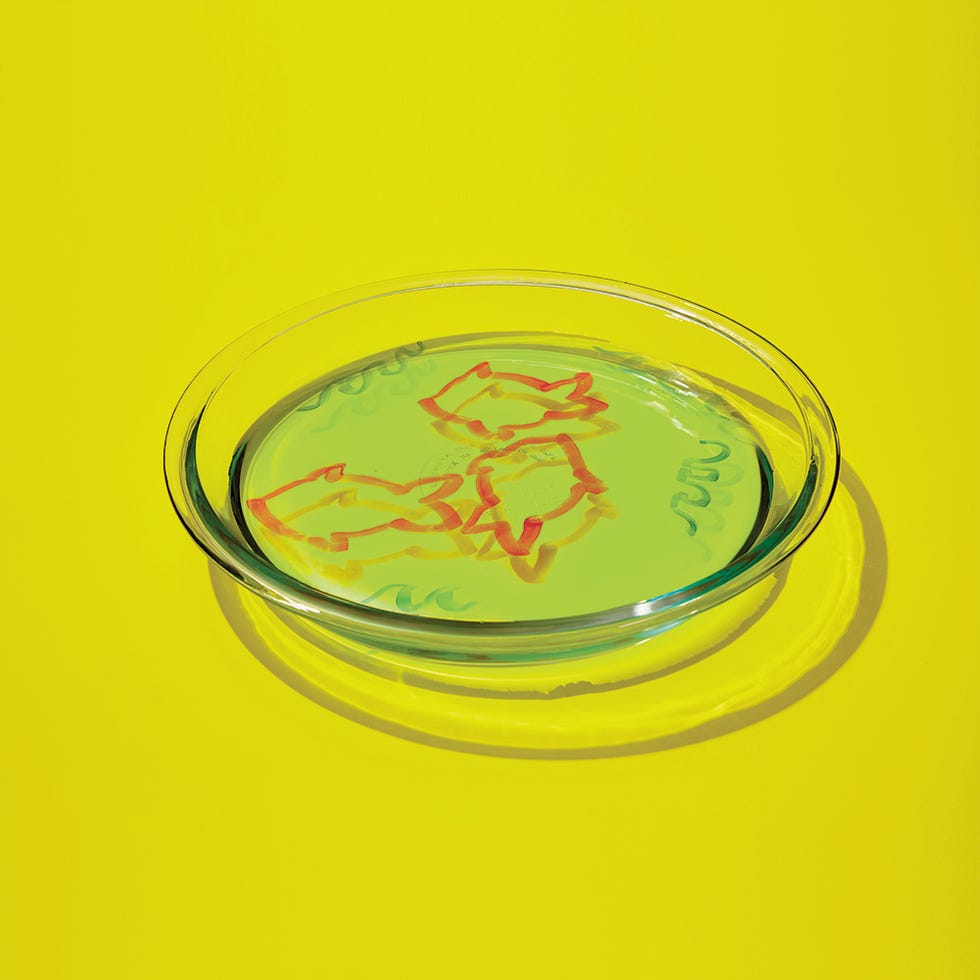
Here's another one that deals with solubility and density.
- Draw the outline of a fish on the bottom of a glass plate or tray in dry-erase marker. Retrace your drawing to make sure all the lines are connected. Let dry for a minute or two.
- Fill the measuring cup with tap water. Place the pour spout just inside the corner of the dish and add water very slowly until it just covers the bottom. Be careful not to pour water directly onto your drawing or make splashes near it. The water will move toward your drawing, eventually surrounding it. Observe what happens. If the water splashes or it doesn’t work on your first try, empty the dish, erase the drawing with a paper towel, dry off the dish, and try again.
- Tilt the dish slightly from side to side. What happens? Jot it down.
The ink in dry erase markers is engineered to be slippery. It’s made with a chemical that causes it to easily release from surfaces. (Permanent markers are made with a chemical that makes the ink stick to surfaces, so be sure not to use these in your experiment!)
The easy-release ink lets go from a surface, but why does it float? There are two reasons. First, dry erase ink isn’t soluble, which means it won’t dissolve in water. Second, dry erase ink is less dense than the water, so it becomes buoyant, meaning it can float. When you tilt the dish, the fish moves around on the water’s surface.
From Good Housekeeping Amazing Science: 83 Hands-on S.T.E.A.M Experiments for Curious Kids! See more in the book »
Brush, Brush!

This one will really get them into brushing their teeth once they scientifically prove all the good things that toothpaste can do.
- Write on sticky notes: Soda 1, Soda 2, Juice 1, and Juice 2. Place them in a row on a counter.
- Fill two glasses halfway with brown soda and place behind the Soda 1 and Soda 2 sticky notes. Fill two glasses halfway with lemon juice and place behind the Juice 1 and Juice 2 sticky notes.
- Carefully place one egg in the bowl. Squeeze a big dollop — about one tablespoon — of toothpaste on top of the egg and gently rub the toothpaste all around with your hands until the egg is completely covered in a thick layer of toothpaste. Repeat with a second egg.
- Gently submerge the toothpaste-covered eggs into the liquids: one egg in the glass labeled Soda 1 and the other egg in the glass labeled Juice 1. Wash and dry your hands.
- Gently submerge the remaining eggs, without toothpaste on them, in the remaining glasses: one in the glass labeled Soda 2 and the other in the glass of juice labeled Juice 2. Wash and dry your hands. Leave the eggs in the glasses for 12 hours.
- After 12 hours, remove the eggs from the glasses of soda one at a time. Rinse them in cool water and pat them dry with the towel. Place each egg by the sticky note of the glass it was in. Are the eggs the same or different colors?
- Remove the eggs from the glasses of juice one at a time. Rinse them under the faucet and pat them dry. Place each egg by the sticky note of the glass it was in. Feel the eggs gently. Does one feel stronger or weaker than the other?
- Write down your observations in your science notebook.
The eggshells in this experiment represent the enamel (outer coating) on your teeth. Toothpaste cleans your teeth and prevents stains: it removes food and drink particles that are stuck on your teeth. Teeth can be stained easily by dark-colored liquids like cola, coffee or tea. The egg without toothpaste will be brown and discolored. The egg covered in toothpaste was protected from turning brown.
Toothpaste also protects your pearly whites from decay (breaking down). The egg without toothpaste left in the lemon juice was worn down and soft to the touch, while the egg that was protected with toothpaste is stronger. The lemon juice is acidic, and those acids broke down the shell just as acidic drinks can wear away your tooth enamel. When a tooth is worn down, a cavity can form more easily. But the fluoride in toothpaste mixes with your saliva to create a protective coating around your tooth enamel. It helps keep your teeth strong and cavity-free.
Grow an Avocado Tree
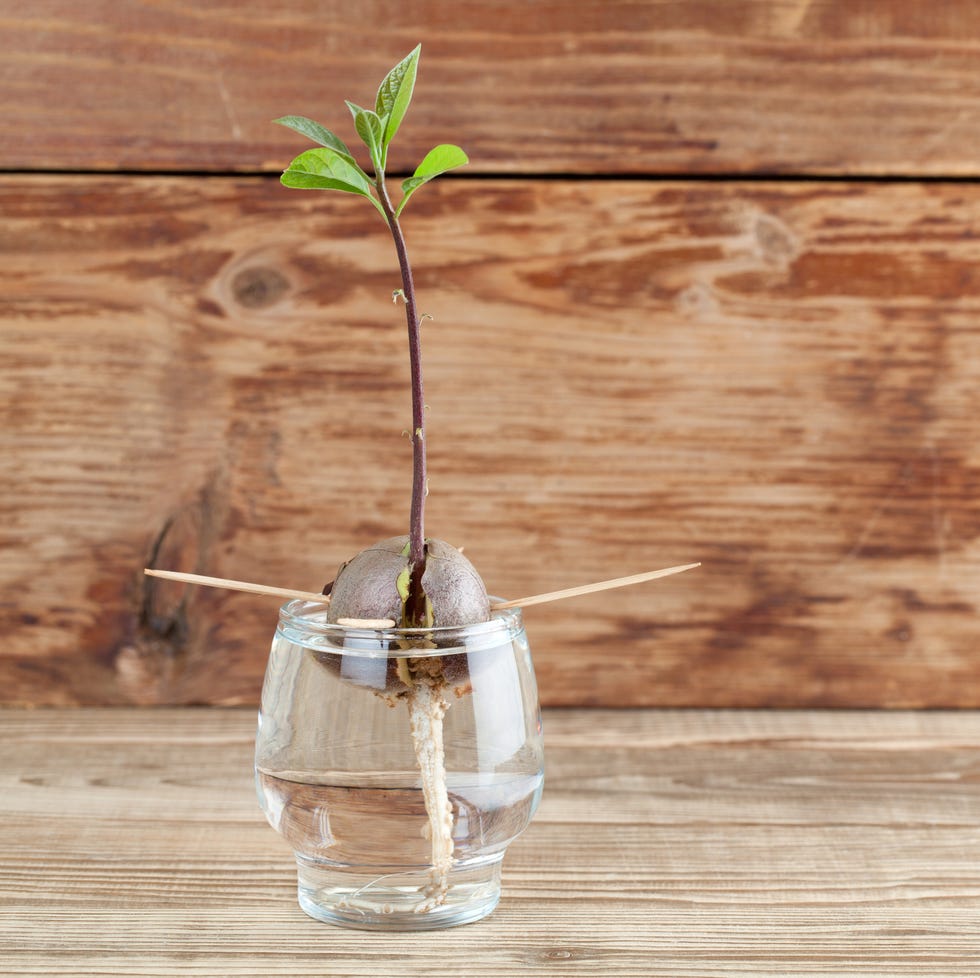
For an easy lesson in Earth Science, your family can grow an avocado tree from a pit. You can buy an AvoSeedo kit , or just peel the seed and suspend it over water with toothpicks.
Get the tutorial »
Milk Bottle Xylophone

No for an experiment in sound!
- Arrange six glass jars or bottles, all the same size with no lids, in a line. What will each jar sound like when you tap it with a spoon? Make a prediction, then tap each jar. Record your observations.
- Next, put water in each of the jars. Pour 1⁄4 cup (60 ml) of water into the first jar. Add 1⁄2 cup (120 ml) of water to the second jar. Continue in 1⁄4-cup increments, adding 3⁄4 cup (180 ml) of water to the third jar, 1 cup (240 ml) of water to the fourth jar, 11⁄4 cups (300 ml) of water to the fifth jar, and 11⁄2 cups (360 ml) to the sixth jar. Add a couple of drops of food coloring to each jar.
- What will each jar sound like? Will they sound the same or different than when the container was empty? Will they sound the same or different from one another? Record your predictions.
- Tap each jar with a metal spoon. Write down your observations about each jar’s pitch (how high or low a sound is) in your notebook.
Sound waves are created by vibrations, which are back-and-forth movements that are repeated again and again. Pitch depends on the frequency of the waves — how many are created each second. A high pitch is created by high-frequency sound waves, and can sound squeaky. A low pitch is created by low-frequency sound waves, and sounds deep and booming.
When you tapped the jar, it vibrated. The vibrations traveled from the jar to the water to the air and eventually to your ears. The jars with more water had a low pitch. The sound waves vibrated more slowly because they had more water to travel through. The jars with less water had higher pitches. The sound waves vibrated faster because they had less water to travel through. A jar with no water in it makes the highest pitch because it has the least substance to travel through.
"Elephant Toothpaste"

Okay, elephants don't really brush with this stuff, which is made from a chemical reaction between hydrogen peroxide, yeast, dish soap and a few other simple ingredients. But this experiment has a big "wow" factor since, when the substances are mixed, the "toothpaste" foams out of the bottle. You can use it to teach kids about catalysts and exothermic reactions.
Get the tutorial at Babble Dabble Do »
DIY Compass

Explore the way magnetism works, and how it affects everyday objects, by magnetizing a needle and making a DIY compass. You can even spin the compass in the water, and it'll end up pointing the right way again.
Get the tutorial at STEAM Powered Family »
Craft Stick Chain Reaction

Kids can learn about the differences between potential and kinetic energy with this chain reaction. It makes a big impact: Once the tension is released, the pom poms go flying through the air!
Get the the tutorial at Science Sparks »
Color-Changing Invisible Ink

Kids will feel like super-spies when they use this heatless method to reveal pictures or colors written with "invisible ink." You can try different acid/base combinations to see which one makes the most dramatic result.
Get the tutorial at Research Parent »
Paper Bridge

Get the engineering back into STEM with this activity, which challenges kids to create a paper bridge that's strong enough to hold as many pennies as possible. How can they manipulate the paper to make it sturdier? (Hint: Fold it!)
See the paper bridge tutorial at KidsActivities.com »

Challenge your little scientist to lift up an ice cube with just a piece of string. It's possible ... with a little salt to help. Salt melts the ice and lowers the freezing point of the ice cube, which absorbs the heat from the water around it, making the water cold enough to re-freeze around the string.
Get the tutorial at Playdough to Plato »
Marshmallow Catapult

Another lesson in potential and kinetic energy, kids will love sending mini marshmallows flying in the name of science. Change some of the variables and see how that affects the marshmallow's trajectory.
Get the tutorial at Hello, Wonderful »
Leaf Breathing

It's hard for kids to picture how plants and trees "breathe" through their leaves — until they see the bubbles appear on a leaf that's submerged in water. You can also teach them about photosynthesis by putting different leaves in different spots with varying levels of sunlight.
Get the tutorial at KC EDventures »
Hoop-and-Straw Airplane

We all remember how to fold those classic, triangular paper airplanes, but these hoop-and-straw airplanes fly way better (and straighter). Experiment by changing the length of the straw and the size of the hoops and see how it affects the flight.
Get the tutorial at Mombrite »
Film Canister Rocket

Blast off! You don't need jet fuel to make these rockets go, just Alka-Seltzer tablets and baking soda, but they'll be amazed when they achieve lift-off! (Note: If you can't find old film canisters, tubes of Airborne work, too.)
Get the tutorial at Raising Lifelong Learners »
Coin Inertia

Stack up about five or so coins on a piece of cardboard and place it over a glass of water. Then, flick the cardboard out from on top of the glass. Do the coins drop into the water, or ride with the cardboard? Due to inertia, they drop into the water — a very visual (and fun!) demonstration of Newton's First Law of Motion.
Get the tutorial at Engineering Emily »
Apple Oxidation

What works best for keeping an apple from turning brown? Test to find out! Slice up an apple, and let each slice soak in a different liquid. Then take them out, lay them on a tray, and check the brownness after three minutes, six minutes and so on. Not only does this test the properties of different liquids, it also helps students practice the scientific method if they create hypotheses about which liquids would be most effective.
Get the tutorial at Jennifer Findley »
RELATED: 50 Fun Activities for Kids Will Keep Them Entertained for Hours
Coffee Ground Fossils

By making a salt dough with coffee grounds and pressing various shapes into it (toy dinosaur feet, seashells), kids can get a better understanding of how fossils are made. If you poke a hole in the top before it dries, the kids can hang their "fossils" up in their rooms.
Get the tutorial at Crafts by Amanda »
Chromatography Flowers
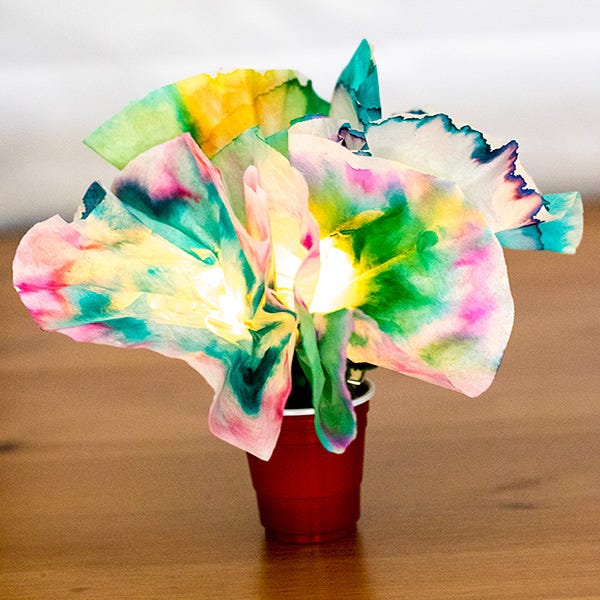
Chromatography is the process of separating a solution into different parts — like the pigments in the ink used in markers. If you draw stripes around a coffee filter, then fold it up and dip the tip in water, the water will travel up the filter and separate the marker ink into its different pigments (in cool patterns that you can display as a craft project). This family made the end-result even brighter by adding an LED circuit to the center.
Get the tutorial at Steam Powered Family »
Water Walking

You'll need six containers of water for this one: three with clear water, one with red food coloring, one with blue coloring, and one with yellow coloring. Arrange them in a circle, alternating colored and clear containers, and make bridges between the containers with folded paper towels. Your kids will be amazed to see the colored water "walk" over the bridges and into the clear containers, mixing colors, and giving them a first-hand look at the magic of capillarity.
Get the tutorial at Fun Learning for Kids »
Sunscreen Test

This experiment puts the A (art) in STEAM: Paint different designs on construction paper with different sunscreens, leave the papers out in the sun and compare the results. Then, hang your "conclusions" on your fridge.
Get the tutorial at Tonya Staab »
Marisa (she/her) has covered all things parenting, from the postpartum period through the empty nest, for Good Housekeeping since 2018; she previously wrote about parents and families at Parents and Working Mother . She lives with her husband and daughter in Brooklyn, where she can be found dominating the audio round at her local bar trivia night or tweeting about movies.

Parenting Tips & Advice

The Best Toddler TV Shows to Watch With Kids

35 New Year's Traditions From Around the World

Irish Boy Names for Your Bundle of Joy
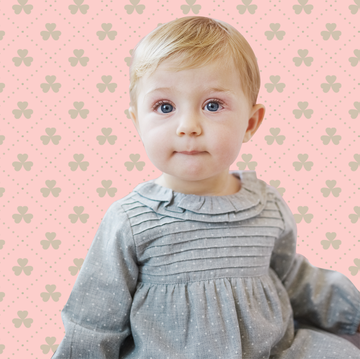
150 Beautiful Irish Baby Girl Names

100 Beautiful Baby Names With Meaning

150 Beautiful Indian Baby Girl Names

200+ Indian Baby Boy Names

How to Survive Daylight Saving With Little Kids

120 Cool Nature Baby Names, from Ocean to Sky

200 Top Japanese Baby Names for All Genders

Ground Rules for Talking About Politics With Kids

How to Raise a Good Citizen (A Guide for Parents)
Get Your ALL ACCESS Shop Pass here →

65 Amazing Chemistry Experiments for Kids
Chemistry is so much fun, and we have tons of cool chemistry experiments to share with you. Like our awesome physics experiments , we decided we needed to put together a list of fun chemistry projects kids can do at home or in the classroom. Check out these examples of easy chemical reactions below!

Chemistry Experiments You Want To Try
We have divided our chemistry experiments below into chemical reactions, acids and bases, chromatography, solutions, polymers, and crystals. Some chemistry experiments also explore concepts in physics .

Chemical Reactions
A chemical reaction is a process where two or more substances react together to form a new chemical substance. This might look like a gas formed, cooking or baking, milk souring, etc.
Sometimes a physical change occurs, like our popcorn experiment or melting crayons, rather than a chemical change . However, these experiments below are all great examples of chemical change, where a new substance is formed.
CHECK OUT: Examples Of Physical Change and Chemical Change Examples
Can chemical reactions happen safely at home or in the classroom? Absolutely! This is one of the most fun parts of chemistry for kids, and you will find lots of ideas below for safe chemical reactions you can do with your junior scientists.

Acids And Bases
Acids and bases are important for many chemical processes in everyday life. An acid has hydrogen ions and can donate protons. Acids taste sour and have a pH from 0 to 7. Vinegar and citric acid are examples of acids.
Bases are molecules that can accept hydrogen ions. They have a pH higher than seven and can taste bitter. Sodium bicarbonate or baking soda and ammonia are examples of bases. Learn more about the pH scale.
Vinegar and baking soda experiments are classic acid-base reactions. You’ll also find experiments that use an acid such as vinegar or lemon juice. We have so many fun variations that your kids will love to try! Check out these acid-base chemistry experiments below.

Chromatography
Chromatography is a technique that involves the separation of a mixture into its parts so you can see each one individually.

A solution is a mixture of 2 or more solutes dissolved in a solvent up to its solubility limit. It most often refers to liquids, but solutions, gases, and solids are also possible. A solution will have its components evenly distributed throughout the mixture.
Chemistry experiments involving solutions are great for kids. Gather liquids you commonly find in your kitchen, oil, water, detergent, etc., and explore what dissolves.

A polymer is a huge molecule made of many smaller molecules layered together in repeating patterns called monomers. Putty, slime, and cornstarch are all examples of polymers. Learn more about the science of slime polymers .
Making slime is great for at-home chemistry! It’s also a classic middle school science demonstration for the classroom. Here are a few of our favorite slime recipes to get you started.

non-Newtonian Fluids
Learn how to make oobleck ! Explore polymers with a simple cornstarch and water mixture.

A crystal is a solid material with a highly ordered internal structure of atoms, molecules, or ions held together by chemical bonds. Grow crystals and observe them by mixing a super-saturated solution and leaving it for several days to let the crystals form.
Simple to grow and taste-safe, a sugar crystals experiment is more accessible for younger kids, but you can also try growing borax crystals for older kids.
Check out our fun theme variations of growing crystals too!

Chemistry For Preschoolers
Let’s keep it basic for our younger or junior scientists! Chemistry is all about how different materials are put together and what they are made up of, like atoms and molecules.
What can you do with your youngest scientists? While working 1-1 or in a very small group is ideal, you can explore chemistry in a few fun ways that don’t require a lengthy setup or a lot of directions to follow. Do NOT overcomplicate the ideas!
Take, for example, our very first baking soda science experiment (age 3). So simple to set up, but so lovely to watch the amazement on my son’s face.
Check out these fun ways for preschoolers to explore science…
- Make liquid mixtures! Mix water and oil in a jar, let it rest, and observe what happens.
- Make solid mixtures! Mix two solid items and observe the changes!
- Mix a solid and a liquid! Add ice to a drink and observe the changes!
- Make a reaction! Set up a tray with baking soda in small cups and colored vinegar in small cups with pipettes. Mix and observe!
- Make oobleck ! Mix cornstarch and water for a weird and messy science activity.
- Explore characteristics of things! Use new science words to describe how different materials feel. Explore squishy, hard, rough, smooth, wet, etc…
Much of preschool science is about you sharing new experiences with them that are relatable and simple. A sk questions, share new words, and offer verbal prompts to get them to communicate with you about what they see!
Chemistry Science Fair Projects
Science projects are excellent tools for older kids to demonstrate their knowledge of science. They can also be used in various environments, including classrooms, homeschools, and groups.
Kids can take everything they have learned about using the scientific method , stating a hypothesis, choosing variables , and analyzing and presenting data.
Want to turn one of these fun chemistry experiments into a science project? Then you will want to check out these helpful resources.
- Easy Science Fair Projects
- Science Project Tips From A Teacher
- Science Fair Board Ideas
More Helpful Science Resources
Here are a few resources that will help you introduce science more effectively to your kiddos or students and feel confident yourself when presenting materials. You’ll find helpful free printables throughout.
- Best Science Practices (as it relates to the scientific method)
- Science Vocabulary
- 8 Science Books for Kids
- All About Scientists
- Free Science Worksheets
- Science Supplies List
- Science Tools for Kids
- Scientific Method for Kids
- Citizen Science Guide
- Join us in the Club
Printable Science Projects For Kids
If you’re looking to grab all of our printable science projects in one convenient place plus exclusive worksheets and bonuses like a STEAM Project pack, our Science Project Pack is what you need! Over 300+ Pages!
- 90+ classic science activities with journal pages, supply lists, set up and process, and science information. NEW! Activity-specific observation pages!
- Best science practices posters and our original science method process folders for extra alternatives!
- Be a Collector activities pack introduces kids to the world of making collections through the eyes of a scientist. What will they collect first?
- Know the Words Science vocabulary pack includes flashcards, crosswords, and word searches that illuminate keywords in the experiments!
- My science journal writing prompts explore what it means to be a scientist!!
- Bonus STEAM Project Pack: Art meets science with doable projects!
- Bonus Quick Grab Packs for Biology, Earth Science, Chemistry, and Physics

17 Comments
- Pingback: Homemade Sand Slime Recipe for Kids Summer Science Activity
- Pingback: Magic Milk Classic Science Experiment Kids Science
- Pingback: Children to Leaders Foundation | 18 Great Online Resources to Get Your Child into Science
- Pingback: Balloon Baking Soda Vinegar Science Experiment for Kids
- Pingback: Erupting Apple Science and Apple Volcano Chemistry Activity for Kids
- Pingback: Simple Physics Activities Science Experiments STEM Ideas for Kids
- Pingback: How to Get Slime Out of Clothes (2 Methods to Try!)
- Pingback: How to Incorporate Chemistry at Home
- Pingback: Winter Magic Milk Science Project for Snowman Science Activities
- Pingback: Coffee Filter Flowers Science and STEAM Activity for Kids
- Pingback: Crystal Flowers Spring Science Experiment and Craft for Mother Day
- Pingback: Erupting Lemon Volcano Chemistry for Kids Science Activities
- Pingback: Grow Sugar Crystals for Edible Rock Candy Chemistry Experiment
- Pingback: 187Great Online Resources to Get Your Child into Science
- Pingback: The BEST Very Simple Science Experiments for Kids to Try Anywhere
- Pingback: Simple Ways To Take STEAM Outdoors This Summer
- Pingback: Geometric Bubble STEM Activity for Kids Summer Science
Comments are closed.

Subscribe to receive a free 5-Day STEM Challenge Guide
~ projects to try now ~.


Kids Art & Craft
10 simple science experiments for 3-5 year olds.

Kids Activities
Easy Science Experiments Activities For Kindergartners

Looking for age-appropriate science activities for preschoolers? Here are a bunch of fun science ideas suitable for 3-5 year olds.
Test your kids hypothesis on what would happen if they stepped on raw eggs . They will love this one! From Housing A Forest.
Explore how plants “drink” with this experiment showing water moving through a leaf . From Buggy and Buddy.
You can blow up a balloon with a combination of soda and candy. So cool! From Learn Play Imagine.
Oil and water don’t mix , but what happens when you add this special ingredient? From Play Trains.
Explaining the concept of air pressure to preschoolers can be tricky but this easy experiment shows it perfectly! From Kids Activities Blog.
How do the ice trucks melt snow after a storm? This is a great demonstration. From The Artul Parent.
This exploding baggie experiment is a twist on the classic baking soda and vinegar reaction and is super simple. From Coffee Cups and Crayons.
Explain to your kids how sound waves work with this classic experiment. From We Made That.
Exploding milk is one of the most fun and simple kid science experiments and you only need three kitchen ingredients. From Laughing Kids Learn.
Did you know you can make ice grow ? Here’s how! From Teach Preschool.
Hope you like these
Related posts:
- Fun Balloon Science Experiments for Kids
- Science Experiments For Class 4 With Explaination – Simple Fair Project Models
- Walking Water Rainbow Science Experiment for Kids
- 21 Pony Bead Craft And Projects For Kids
- Small Plastic Bottle Craft Ideas for Kids – Easy Art Ideas for School
- Family Tree For Kids Project – DIY Ideas for School Children
- DIY Creative Cardboard Crafts That Kids Will Love
- Lime Crafts & Activities for Kids

Your email address will not be published. Required fields are marked *
Save my name, email, and website in this browser for the next time I comment.
More in Kids Activities

Easy DIY Christmas Craft Ideas for Kids
Christmas is celebrated on 25th of December every year. It is celebrated in spirits of birth...
Pretty Peacock Finger Impression Painting Idea For Kids
This activity is a great way for kids to express themselves and use their imagination! All...
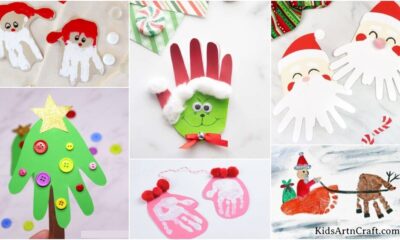
Christmas Handprint Crafts For Kids
If you’re searching for Christmas handprint crafts for kids to do at home, you’re in right...

Christmas Wreath Artwork Tutorial Idea For Kids
This is an easy step-by-step tutorial to make a realistic merry Christmas wreath artwork that will...

Fruit Foam Net Pineapple Craft Idea for Kids
This fun craft idea for kids is a creative way to turn a foam net into...
Subscribe us on Youtube
Recent post.

Coloring Pages
Animal coloring fun for all ages – free and printable worksheets.

Creative Paw Patrol Christmas Coloring Pages For Kids

Fun and Engaging Animal Coloring Page Worksheets for Children

Bright and Creative Coloring Pages For Kids

Fun and Amazing Fruit Coloring Pages for Kids
Popular tags.

Are you looking for fun and creative science ideas to do with the kids? Well, yay! Because that’s what this blog is all about …
Have a browse through our most recent posts below.

- Next Page »

Join us, as we attempt, experiment and stumble our way through fun science at home.
Thanks for stopping by. We love having you here. Go science kids!
10 Comments
Saved as a favorite, I really like your website!
Thanks Flora!
Keep this going please, great job!
Yeah,I would say the same. Great job!
My name is Erin Marie. I am a fellow blogger. I LOOOOVE your website and use it all of the time with my daughter. So, I nominated you for the Liebster Award.
You can view the nomination post here: https://luckyinluv.com/liebster-award
Thank You! Erin Marie
Thank you for your exciting, educational and easy-to-follow experiments and activities. I help run a boys’ club (ages 7 to 11) and we are always looking for activities which will make their brains work harder while their hands have a bit of fun! I am looking forward to receiving your emails with more of these science activities.
You take experiments from Home Lab App in Google play
I haven’t heard of that app, so no, I haven’t taken any of their experiments. Although, many of them are ‘common’ science experiments that are available in many science textbooks and the like, so there’s likely to be unintentional double up.
is there a way to print the snowflake activity directions without having to print 20 pages? Thanks!
Ah, yes, I’m working on adding an easy ‘print instructions’ feature. sorry it’s not up and running yet, but watch this space!
Leave a Reply Cancel reply
Your email address will not be published. Required fields are marked *
Save my name, email, and website in this browser for the next time I comment.
This site uses Akismet to reduce spam. Learn how your comment data is processed .
- Skip to primary navigation
- Skip to main content
- Skip to primary sidebar

- FREE Experiments
- Kitchen Science
- Climate Change
- Egg Experiments
- Fairy Tale Science
- Edible Science
- Human Health
- Inspirational Women
- Forces and Motion
- Science Fair Projects
- STEM Challenges
- Science Sparks Books
- Contact Science Sparks
- Science Resources for Home and School
Great Science Experiments for Kids
August 19, 2018 By Emma Vanstone 10 Comments
I’ve found my 5 year old to be incredibly curious at the moment, always asking questions and wanting to know how things work. Even something as simple as a rain gauge has been VERY exciting for her. With that in mind I’ve pulled together a list of great science experiments for kids of all ages! The age ranges mentioned in this post are just a guide, most science is fun for all ages if you tweak the activity a little bit.
I’ve also got a couple of science books available if you fancy taking a look.
Science Experiments for 4-6 Year Olds
Bubble snakes.
B ubble snakes are very easy to make. Try blowing harder and then more slowly, and look for rainbows in the bubbles.

Paint on Ice
Ice painting has always kept my children busy for ages. Another idea is to freeze a 3D shape and paint that. Cake moulds work really well for this.


Filter Paper Butterflies
Make filter paper butterflies . This fun, creative chromatography experiment is great for younger children. Ink spreading through filter paper opens the door to lots of questions, and the fact that the dry filter paper can be turned into a craft is an added bonus.

Superhero Cressheads
These superhero themed cress heads are super cute and perfect for learning about germination.

How many feet tall are you?
Find out how many of your own feet tall you are. Is there a pattern?

What’s inside the body?
Children can learn abour what’s inside their body by drawing around themselves or a friend on a roll of paper and then adding in a skeleton or even organs.
Pine cone weather station
A pine cone weather station is a fun way to learn about the weather. Thanks to Rainy Day Mum for this one.
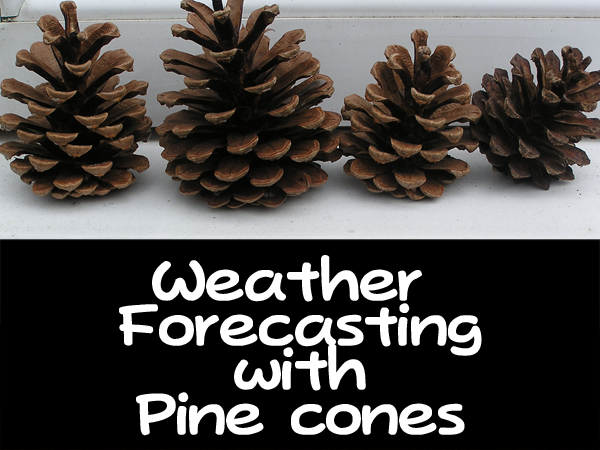
Static electricity and jumping frogs
Learn about static electricity with jumping frogs . The frogs are cut out from tissue paper and jump up the balloon when it’s charged with static electricity.

Optical illusion
Trick your eyes with a super easy optical illusion . Optical illusions are fantastic because they can be themed in lots of different ways. We’ve made a fish in a tank, Santa in a chimney, and a face on a pumpkin.

Bubble wands
Another activity that inspires a lot of questions from younger children is creating bubbles from differently shaped bubble wands.
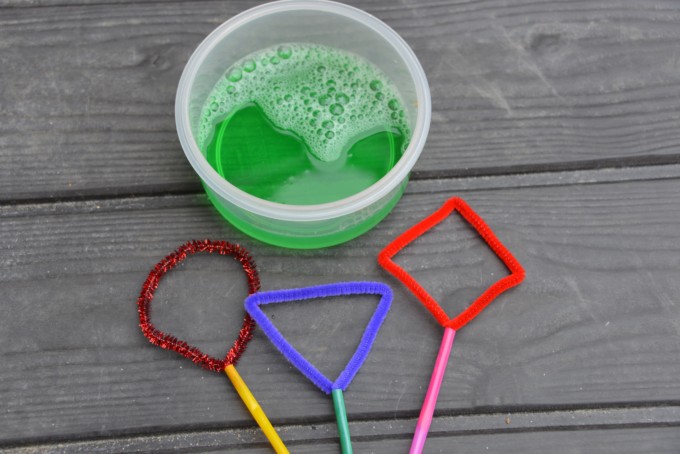
Waterproofing activity
Learn about waterproof materials with this fun activity using soft toys or try my Save the Dinosaur waterproofing activity .
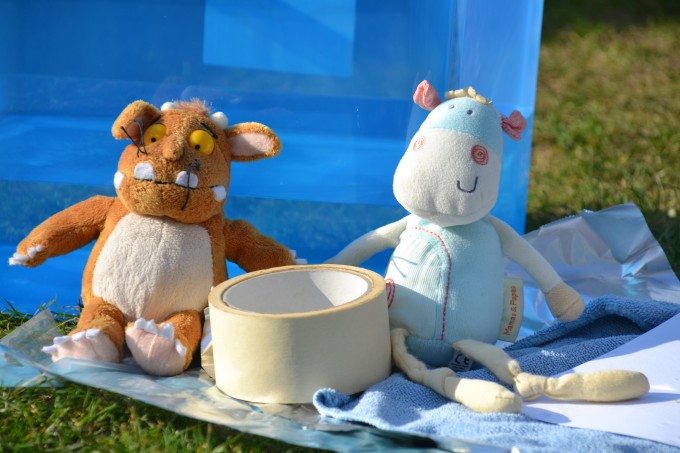
Make a magnet maze and learn about magnetism . Can you make a huge version?
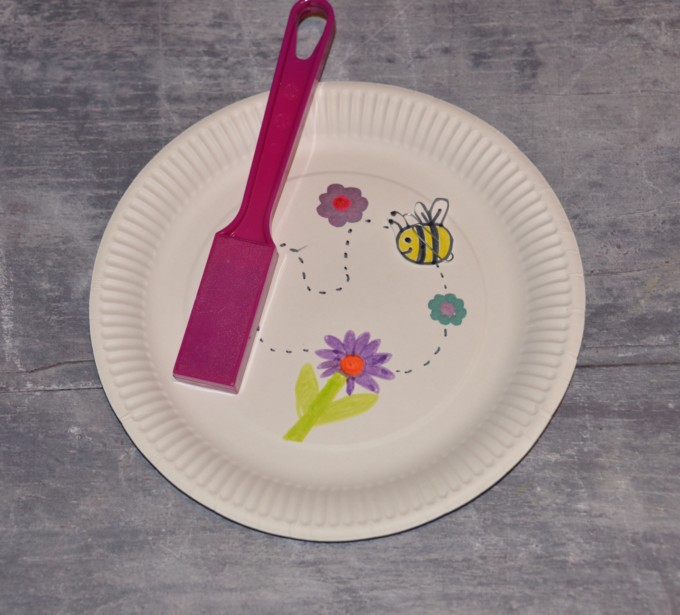
Explore freezing and melting with slushy drinks, you could even try some colour mixing.
Make some coloured ice cubes for more fizzy fun or how about some coloured rocks ?
Find out about arm span and its relation to height in this easy activity.
Make some s hadow puppets or a shadow frame and then put on a show. What happens to the shadow when you move it away from the light source?
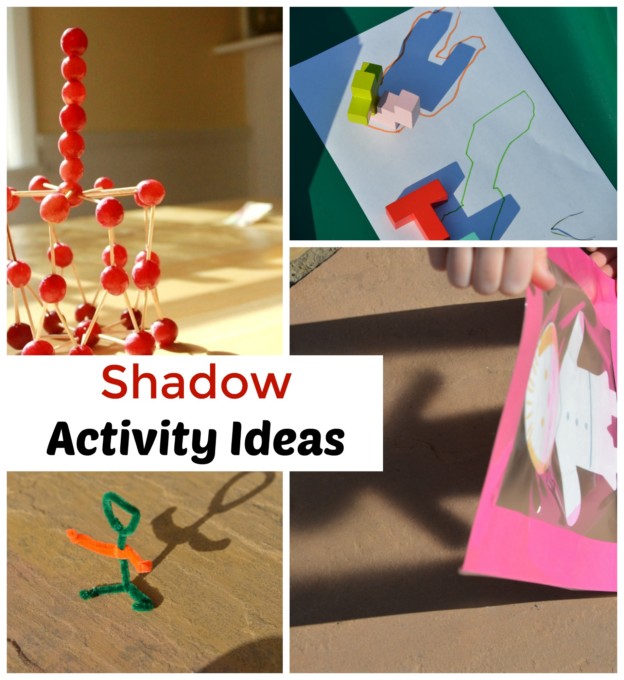
Make mixture with toys . This is great for starting to lean about properties of materials.
Try some colour mixing with jelly .
Sort Ariel’s treasures into groups depending on their properties.

Start to learn about what conditions green plants need to grow with this cress caterpillar .
Have some messy fun with oobleck !
Make some simple patterns using DUPLO.
How about setting up a chemistry lab in the kitchen? all you need is some coloured water, oil and pipettes.

Science Experiments for 7-11 Year olds
Try a bit of science magic? Can you make an egg bounce ?

Learn about oil and water not mixing and density with this density jar . Experiment with different objects floating on the layers to make it more fun. What happens when you shake it?

How about making some simple ‘shooters ‘ like Red Ted Art , what happens to them when it’s windy? Do they move further if you blow harder?
We LOVE these candy science experiments !
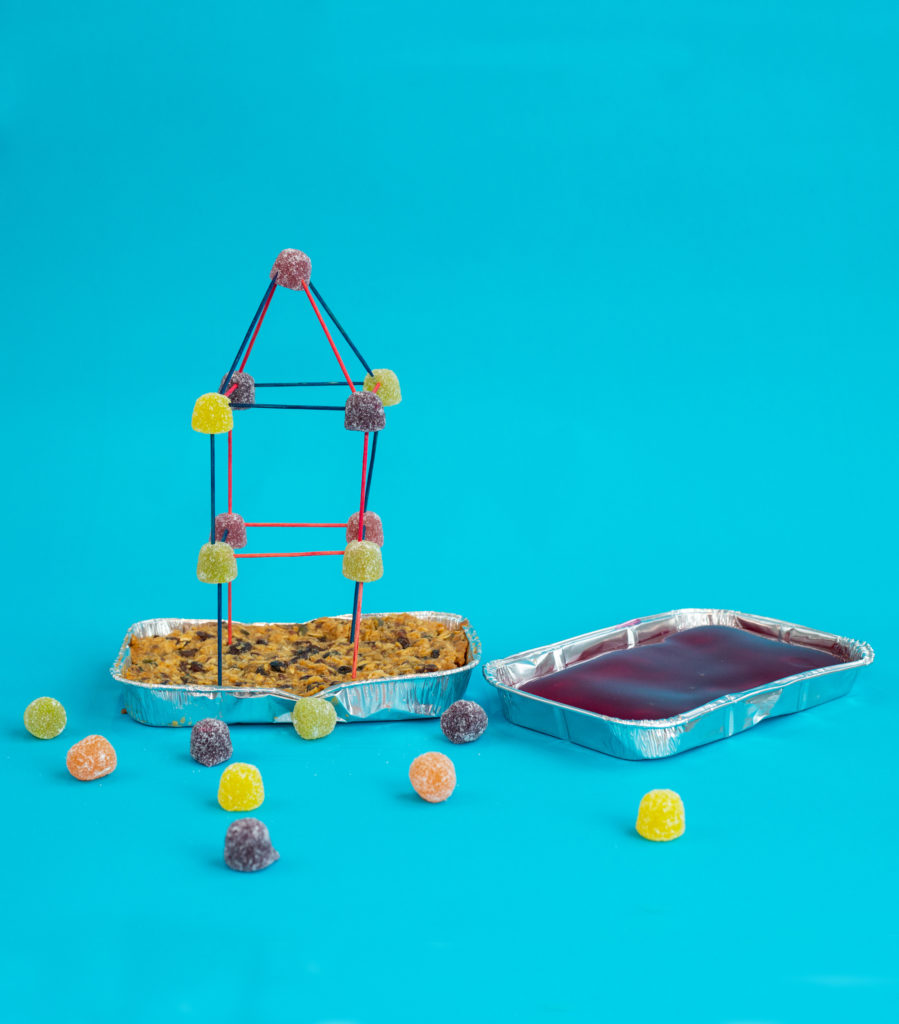
Learn how to clean dirty water using filters or design and build a toy filter .
If there’s a Science Fair coming up, we’ve got lots of easy and impressive science fair projects to try too!
Find out what makes the best sandcastle? Is dry or wet sand better?
More great science experiments for kids
Adult help is definitely needed for this one, but a Water Powered Bottle Rocket is always a big hit in our house.
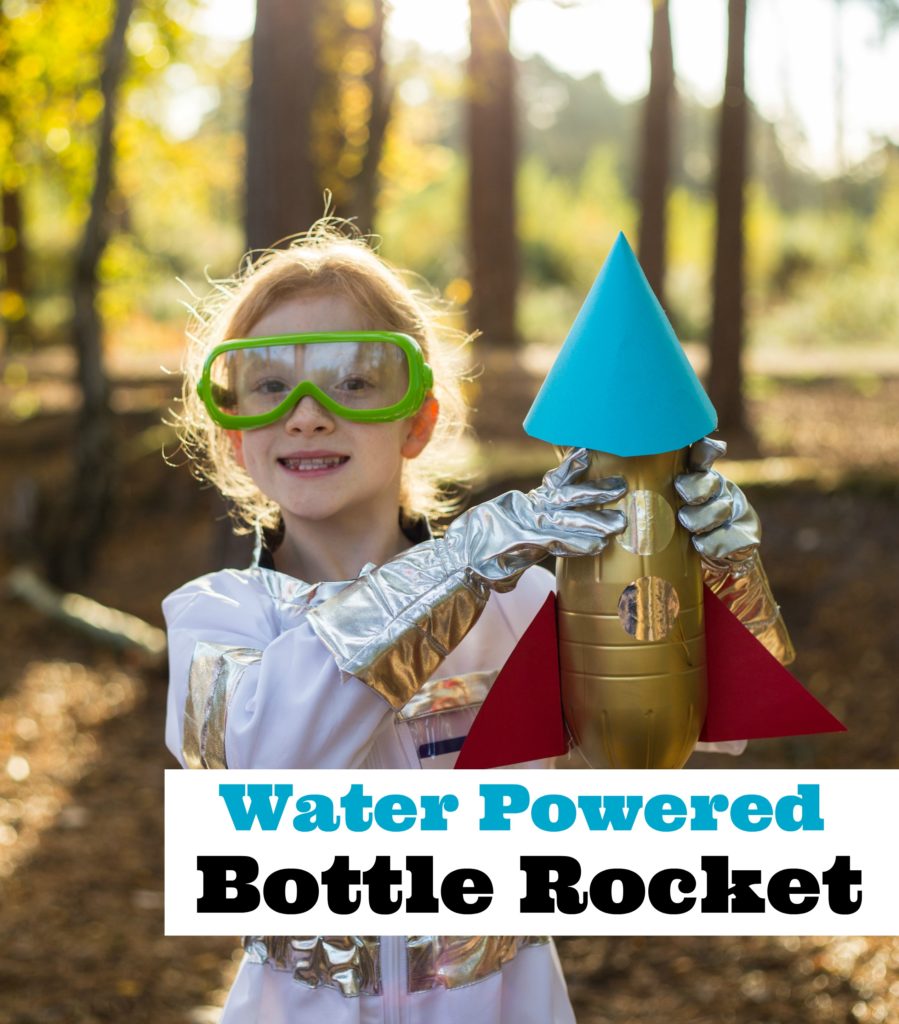
Make honeycomb, pancakes, meringue and more in this collection of tasty kitchen science experiments and activities.
If it’s coming up to Valentine’s Day we’ve got lots of easy Valentine science experiments and activities too.
We’ve got collections of science experiments and investigations whatever the time of year:
Make a snow volcano, frost on a can and lots more cool winter science experiments .
Make a multicoloured cress caterpillar, colourful flowers and lots more spring science experiments for kid s .

Stay busy all summer long with our huge collection of summer science experiments .
If autumn is more your season, we’ve got lots of fall related science activities too!
Contains Affiliate Links
Some of our favourite products
If you liked this post, we’d love you to follow us on Facebook where we post fun science ideas daily!

Last Updated on September 27, 2024 by Emma Vanstone
Safety Notice
Science Sparks ( Wild Sparks Enterprises Ltd ) are not liable for the actions of activity of any person who uses the information in this resource or in any of the suggested further resources. Science Sparks assume no liability with regard to injuries or damage to property that may occur as a result of using the information and carrying out the practical activities contained in this resource or in any of the suggested further resources.
These activities are designed to be carried out by children working with a parent, guardian or other appropriate adult. The adult involved is fully responsible for ensuring that the activities are carried out safely.
Reader Interactions
February 14, 2014 at 9:45 am
Wow wow wow! So much to try …. good job it is half term!!
February 14, 2014 at 10:00 am
So many fabulous ideas, I think Syd would enjoy some of these at 2 and a half- and my older boy too- if this rain carries on we will be back for a look during half term next week!
February 14, 2014 at 10:33 am
This is a great list of activities for half term! We had traffic light jelly last night and the kids wanted to know how I got the colours to stick. I love their curiosity at this age.
February 14, 2014 at 2:26 pm
These are FANTASTIC and super fun activities!! Thank you.
February 14, 2014 at 5:54 pm
Bookmarking this for next week as I fear with this bad weather we might be house bound most of half term!
February 14, 2014 at 11:16 pm
Ohh nice Emma, I think my girls would enjoy these and they are nearly 7! Mich x
February 05, 2015 at 8:18 pm
So glad to come across this!! These activities will be a great addition to our family parties and get together this year! Thank you!
September 05, 2018 at 1:25 pm
Wonderful post! We will be linking to this particularly great content on our site. Keep up the great writing.
February 27, 2019 at 9:07 am
Wow! What a brilliant idea! Really smart & great. Appreciate your thoughts. Thanks a lot for sharing this wonderful experience with us.
May 13, 2019 at 3:38 am
These are great activities for my kids. Perfect for family bonding time.
Leave a Reply Cancel reply
Your email address will not be published. Required fields are marked *

Choose Your Test
- Search Blogs By Category
- College Admissions
- AP and IB Exams
- GPA and Coursework
37 Cool Science Experiments for Kids to Do at Home
General Education
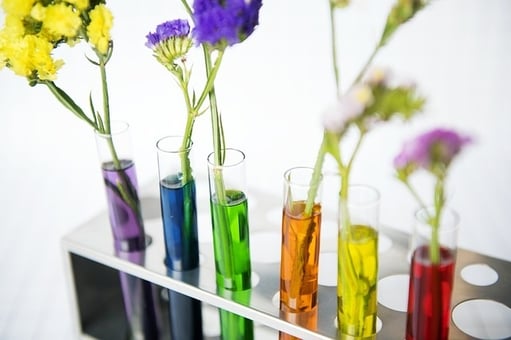
Are you looking for cool science experiments for kids at home or for class? We've got you covered! We've compiled a list of 37 of the best science experiments for kids that cover areas of science ranging from outer space to dinosaurs to chemical reactions. By doing these easy science experiments, kids will make their own blubber and see how polar bears stay warm, make a rain cloud in a jar to observe how weather changes, create a potato battery that'll really power a lightbulb, and more.
Below are 37 of the best science projects for kids to try. For each one we include a description of the experiment, which area(s) of science it teaches kids about, how difficult it is (easy/medium/hard), how messy it is (low/medium/high), and the materials you need to do the project. Note that experiments labelled "hard" are definitely still doable; they just require more materials or time than most of these other science experiments for kids.
#1: Insect Hotels
- Teaches Kids About: Zoology
- Difficulty Level: Medium
- Messiness Level: Medium
Insect hotels can be as simple (just a few sticks wrapped in a bundle) or as elaborate as you'd like, and they're a great way for kids to get creative making the hotel and then get rewarded by seeing who has moved into the home they built. After creating a hotel with hiding places for bugs, place it outside (near a garden is often a good spot), wait a few days, then check it to see who has occupied the "rooms." You can also use a bug ID book or app to try and identify the visitors.
- Materials Needed
- Shadow box or other box with multiple compartments
- Hot glue gun with glue
- Sticks, bark, small rocks, dried leaves, bits of yarn/wool, etc.

#2: DIY Lava Lamp
- Teaches Kids About: Chemical reactions
- Difficulty Level: Easy
In this quick and fun science experiment, kids will mix water, oil, food coloring, and antacid tablets to create their own (temporary) lava lamp . Oil and water don't mix easily, and the antacid tablets will cause the oil to form little globules that are dyed by the food coloring. Just add the ingredients together and you'll end up with a homemade lava lamp!
- Vegetable oil
- Food coloring
- Antacid tablets
#3: Magnetic Slime
- Teaches Kids About: Magnets
- Messiness Level: High (The slime is black and will slightly dye your fingers when you play with it, but it washes off easily.)
A step up from silly putty and Play-Doh, magnetic slime is fun to play with but also teaches kids about magnets and how they attract and repel each other. Some of the ingredients you aren't likely to have around the house, but they can all be purchased online. After mixing the ingredients together, you can use the neodymium magnet (regular magnets won't be strong enough) to make the magnetic slime move without touching it!
- Liquid starch
- Adhesive glue
- Iron oxide powder
- Neodymium (rare earth) magnet
#4: Baking Soda Volcanoes
- Teaches Kids About: Chemical reactions, earth science
- Difficulty Level: Easy-medium
- Messiness Level: High
Baking soda volcanoes are one of the classic science projects for kids, and they're also one of the most popular. It's hard to top the excitement of a volcano erupting inside your home. This experiment can also be as simple or in-depth as you like. For the eruption, all you need is baking soda and vinegar (dishwashing detergent adds some extra power to the eruption), but you can make the "volcano" as elaborate and lifelike as you wish.
- Baking soda
- Dishwashing detergent
- Large mason jar or soda bottle
- Playdough or aluminum foil to make the "volcano"
- Additional items to place around the volcano (optional)
- Food coloring (optional)
#5: Tornado in a Jar
- Teaches Kids About: Weather
- Messiness Level: Low
This is one of the quick and easy and science experiments for kids to teach them about weather. It only takes about five minutes and a few materials to set up, but once you have it ready you and your kids can create your own miniature tornado whose vortex you can see and the strength of which you can change depending on how quickly you swirl the jar.
- Glitter (optional)
#6: Colored Celery Experiment
- Teaches Kids About: Plants
This celery science experiment is another classic science experiment that parents and teachers like because it's easy to do and gives kids a great visual understanding of how transpiration works and how plants get water and nutrients. Just place celery stalks in cups of colored water, wait at least a day, and you'll see the celery leaves take on the color of the water. This happens because celery stalks (like other plants) contain small capillaries that they use to transport water and nutrients throughout the plant.
- Celery stalks (can also use white flowers or pale-colored cabbage)
#7: Rain Cloud in a Jar
This experiment teaches kids about weather and lets them learn how clouds form by making their own rain cloud . This is definitely a science project that requires adult supervision since it uses boiling water as one of the ingredients, but once you pour the water into a glass jar, the experiment is fast and easy, and you'll be rewarded with a little cloud forming in the jar due to condensation.
- Glass jar with a lid
- Boiling water
- Aerosol hairspray

#8: Edible Rock Candy
- Teaches Kids About: Crystal formation
It takes about a week for the crystals of this rock candy experiment to form, but once they have you'll be able to eat the results! After creating a sugar solution, you'll fill jars with it and dangle strings in them that'll slowly become covered with the crystals. This experiment involves heating and pouring boiling water, so adult supervision is necessary, once that step is complete, even very young kids will be excited to watch crystals slowly form.
- Large saucepan
- Clothespins
- String or small skewers
- Candy flavoring (optional)
#9: Water Xylophone
- Teaches Kids About: Sound waves
With just some basic materials you can create your own musical instrument to teach kids about sound waves. In this water xylophone experiment , you'll fill glass jars with varying levels of water. Once they're all lined up, kids can hit the sides with wooden sticks and see how the itch differs depending on how much water is in the jar (more water=lower pitch, less water=higher pitch). This is because sound waves travel differently depending on how full the jars are with water.
- Wooden sticks/skewers
#10: Blood Model in a Jar
- Teaches Kids About: Human biology
This blood model experiment is a great way to get kids to visual what their blood looks like and how complicated it really is. Each ingredient represents a different component of blood (plasma, platelets, red blood cells, etc.), so you just add a certain amount of each to the jar, swirl it around a bit, and you have a model of what your blood looks like.
- Empty jar or bottle
- Red cinnamon candies
- Marshmallows or dry white lima beans
- White sprinkles
#11: Potato Battery
- Teaches Kids About: Electricity
- Difficulty Level: Hard
Did you know that a simple potato can produce enough energy to keep a light bulb lit for over a month? You can create a simple potato battery to show kids. There are kits that provide all the necessary materials and how to set it up, but if you don't purchase one of these it can be a bit trickier to gather everything you need and assemble it correctly. Once it's set though, you'll have your own farm grown battery!
- Fresh potato
- Galvanized nail
- Copper coin

#12: Homemade Pulley
- Teaches Kids About: Simple machines
This science activity requires some materials you may not already have, but once you've gotten them, the homemade pulley takes only a few minutes to set up, and you can leave the pulley up for your kids to play with all year round. This pulley is best set up outside, but can also be done indoors.
- Clothesline
- 2 clothesline pulleys
#13: Light Refraction
- Teaches Kids About: Light
This light refraction experiment takes only a few minutes to set up and uses basic materials, but it's a great way to show kids how light travels. You'll draw two arrows on a sticky note, stick it to the wall, then fill a clear water bottle with water. As you move the water bottle in front of the arrows, the arrows will appear to change the direction they're pointing. This is because of the refraction that occurs when light passes through materials like water and plastic.
- Sticky note
- Transparent water bottle
#14: Nature Journaling
- Teaches Kids About: Ecology, scientific observation
A nature journal is a great way to encourage kids to be creative and really pay attention to what's going on around them. All you need is a blank journal (you can buy one or make your own) along with something to write with. Then just go outside and encourage your children to write or draw what they notice. This could include descriptions of animals they see, tracings of leaves, a drawing of a beautiful flower, etc. Encourage your kids to ask questions about what they observe (Why do birds need to build nests? Why is this flower so brightly colored?) and explain to them that scientists collect research by doing exactly what they're doing now.
- Blank journal or notebook
- Pens/pencils/crayons/markers
- Tape or glue for adding items to the journal
#15: DIY Solar Oven
- Teaches Kids About: Solar energy
This homemade solar oven definitely requires some adult help to set up, but after it's ready you'll have your own mini oven that uses energy from the sun to make s'mores or melt cheese on pizza. While the food is cooking, you can explain to kids how the oven uses the sun's rays to heat the food.
- Aluminum foil
- Knife or box cutter
- Permanent marker
- Plastic cling wrap
- Black construction paper

#16: Animal Blubber Simulation
- Teaches Kids About: Ecology, zoology
If your kids are curious about how animals like polar bears and seals stay warm in polar climates, you can go beyond just explaining it to them; you can actually have them make some of their own blubber and test it out. After you've filled up a large bowl with ice water and let it sit for a few minutes to get really cold, have your kids dip a bare hand in and see how many seconds they can last before their hand gets too cold. Next, coat one of their fingers in shortening and repeat the experiment. Your child will notice that, with the shortening acting like a protective layer of blubber, they don't feel the cold water nearly as much.
- Bowl of ice water
#17: Static Electricity Butterfly
This experiment is a great way for young kids to learn about static electricity, and it's more fun and visual than just having them rub balloons against their heads. First you'll create a butterfly, using thick paper (such as cardstock) for the body and tissue paper for the wings. Then, blow up the balloon, have the kids rub it against their head for a few seconds, then move the balloon to just above the butterfly's wings. The wings will move towards the balloon due to static electricity, and it'll look like the butterfly is flying.
- Tissue paper
- Thick paper
- Glue stick/glue
#18: Edible Double Helix
- Teaches Kids About: Genetics
If your kids are learning about genetics, you can do this edible double helix craft to show them how DNA is formed, what its different parts are, and what it looks like. The licorice will form the sides or backbone of the DNA and each color of marshmallow will represent one of the four chemical bases. Kids will be able to see that only certain chemical bases pair with each other.
- 2 pieces of licorice
- 12 toothpicks
- Small marshmallows in 4 colors (9 of each color)
- 5 paperclips
#19: Leak-Proof Bag
- Teaches Kids About: Molecules, plastics
This is an easy experiment that'll appeal to kids of a variety of ages. Just take a zip-lock bag, fill it about ⅔ of the way with water, and close the top. Next, poke a few sharp objects (like bamboo skewers or sharp pencils) through one end and out the other. At this point you may want to dangle the bag above your child's head, but no need to worry about spills because the bag won't leak? Why not? It's because the plastic used to make zip-lock bags is made of polymers, or long chains of molecules that'll quickly join back together when they're forced apart.
- Zip-lock bags
- Objects with sharp ends (pencils, bamboo skewers, etc.)
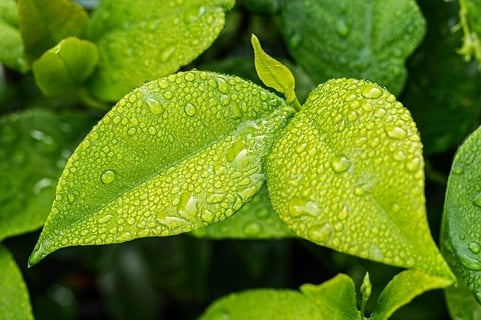
#20: How Do Leaves Breathe?
- Teaches Kids About: Plant science
It takes a few hours to see the results of this leaf experiment , but it couldn't be easier to set up, and kids will love to see a leaf actually "breathing." Just get a large-ish leaf, place it in a bowl (glass works best so you can see everything) filled with water, place a small rock on the leaf to weigh it down, and leave it somewhere sunny. Come back in a few hours and you'll see little bubbles in the water created when the leaf releases the oxygen it created during photosynthesis.
- Large bowl (preferably glass)
- Magnifying glass (optional)
#21: Popsicle Stick Catapults
Kids will love shooting pom poms out of these homemade popsicle stick catapults . After assembling the catapults out of popsicle sticks, rubber bands, and plastic spoons, they're ready to launch pom poms or other lightweight objects. To teach kids about simple machines, you can ask them about how they think the catapults work, what they should do to make the pom poms go a farther/shorter distance, and how the catapult could be made more powerful.
- Popsicle sticks
- Rubber bands
- Plastic spoons
- Paint (optional)
#22: Elephant Toothpaste
You won't want to do this experiment near anything that's difficult to clean (outside may be best), but kids will love seeing this " elephant toothpaste " crazily overflowing the bottle and oozing everywhere. Pour the hydrogen peroxide, food coloring, and dishwashing soap into the bottle, and in the cup mix the yeast packet with some warm water for about 30 seconds. Then, add the yeast mixture to the bottle, stand back, and watch the solution become a massive foamy mixture that pours out of the bottle! The "toothpaste" is formed when the yeast removed the oxygen bubbles from the hydrogen peroxide which created foam. This is an exothermic reaction, and it creates heat as well as foam (you can have kids notice that the bottle became warm as the reaction occurred).
- Clean 16-oz soda bottle
- 6% solution of hydrogen peroxide
- 1 packet of dry yeast
- Dishwashing soap
#23: How Do Penguins Stay Dry?
Penguins, and many other birds, have special oil-producing glands that coat their feathers with a protective layer that causes water to slide right off them, keeping them warm and dry. You can demonstrate this to kids with this penguin craft by having them color a picture of a penguin with crayons, then spraying the picture with water. The wax from the crayons will have created a protective layer like the oil actual birds coat themselves with, and the paper won't absorb the water.
- Penguin image (included in link)
- Spray bottle
- Blue food coloring (optional)

#24: Rock Weathering Experiment
- Teaches Kids About: Geology
This mechanical weathering experiment teaches kids why and how rocks break down or erode. Take two pieces of clay, form them into balls, and wrap them in plastic wrap. Then, leave one out while placing the other in the freezer overnight. The next day, unwrap and compare them. You can repeat freezing the one piece of clay every night for several days to see how much more cracked and weathered it gets than the piece of clay that wasn't frozen. It may even begin to crumble. This weathering also happens to rocks when they are subjected to extreme temperatures, and it's one of the causes of erosion.
- Plastic wrap
#25: Saltwater Density
- Teaches Kids About: Water density
For this saltwater density experiment , you'll fill four clear glasses with water, then add salt to one glass, sugar to one glass, and baking soda to one glass, leaving one glass with just water. Then, float small plastic pieces or grapes in each of the glasses and observe whether they float or not. Saltwater is denser than freshwater, which means some objects may float in saltwater that would sink in freshwater. You can use this experiment to teach kids about the ocean and other bodies of saltwater, such as the Dead Sea, which is so salty people can easily float on top of it.
- Four clear glasses
- Lightweight plastic objects or small grapes
#26: Starburst Rock Cycle
With just a package of Starbursts and a few other materials, you can create models of each of the three rock types: igneous, sedimentary, and metamorphic. Sedimentary "rocks" will be created by pressing thin layers of Starbursts together, metamorphic by heating and pressing Starbursts, and igneous by applying high levels of heat to the Starbursts. Kids will learn how different types of rocks are forms and how the three rock types look different from each other.
- Toaster oven
#27: Inertia Wagon Experiment
- Teaches Kids About: Inertia
This simple experiment teaches kids about inertia (as well as the importance of seatbelts!). Take a small wagon, fill it with a tall stack of books, then have one of your children pull it around then stop abruptly. They won't be able to suddenly stop the wagon without the stack of books falling. You can have the kids predict which direction they think the books will fall and explain that this happens because of inertia, or Newton's first law.
- Stack of books
#28: Dinosaur Tracks
- Teaches Kids About: Paleontology
How are some dinosaur tracks still visible millions of years later? By mixing together several ingredients, you'll get a claylike mixture you can press your hands/feet or dinosaur models into to make dinosaur track imprints . The mixture will harden and the imprints will remain, showing kids how dinosaur (and early human) tracks can stay in rock for such a long period of time.
- Used coffee grounds
- Wooden spoon
- Rolling pin
#29: Sidewalk Constellations
- Teaches Kids About: Astronomy
If you do this sidewalk constellation craft , you'll be able to see the Big Dipper and Orion's Belt in the daylight. On the sidewalk, have kids draw the lines of constellations (using constellation diagrams for guidance) and place stones where the stars are. You can then look at astronomy charts to see where the constellations they drew will be in the sky.
- Sidewalk chalk
- Small stones
- Diagrams of constellations
#30: Lung Model
By building a lung model , you can teach kids about respiration and how their lungs work. After cutting off the bottom of a plastic bottle, you'll stretch a balloon around the opened end and insert another balloon through the mouth of the bottle. You'll then push a straw through the neck of the bottle and secure it with a rubber band and play dough. By blowing into the straw, the balloons will inflate then deflate, similar to how our lungs work.
- Plastic bottle
- Rubber band

#31: Homemade Dinosaur Bones
By mixing just flour, salt, and water, you'll create a basic salt dough that'll harden when baked. You can use this dough to make homemade dinosaur bones and teach kids about paleontology. You can use books or diagrams to learn how different dinosaur bones were shaped, and you can even bury the bones in a sandpit or something similar and then excavate them the way real paleontologists do.
- Images of dinosaur bones
#32: Clay and Toothpick Molecules
There are many variations on homemade molecule science crafts . This one uses clay and toothpicks, although gumdrops or even small pieces of fruit like grapes can be used in place of clay. Roll the clay into balls and use molecule diagrams to attach the clay to toothpicks in the shape of the molecules. Kids can make numerous types of molecules and learn how atoms bond together to form molecules.
- Clay or gumdrops (in four colors)
- Diagrams of molecules
#33: Articulated Hand Model
By creating an articulated hand model , you can teach kids about bones, joints, and how our hands are able to move in many ways and accomplish so many different tasks. After creating a hand out of thin foam, kids will cut straws to represent the different bones in the hand and glue them to the fingers of the hand models. You'll then thread yarn (which represents tendons) through the straws, stabilize the model with a chopstick or other small stick, and end up with a hand model that moves and bends the way actual human hands do.
- Straws (paper work best)
- Twine or yarn
#34: Solar Energy Experiment
- Teaches Kids About: Solar energy, light rays
This solar energy science experiment will teach kids about solar energy and how different colors absorb different amounts of energy. In a sunny spot outside, place six colored pieces of paper next to each other, and place an ice cube in the middle of each paper. Then, observe how quickly each of the ice cubes melt. The ice cube on the black piece of paper will melt fastest since black absorbs the most light (all the light ray colors), while the ice cube on the white paper will melt slowest since white absorbs the least light (it instead reflects light). You can then explain why certain colors look the way they do. (Colors besides black and white absorb all light except for the one ray color they reflect; this is the color they appear to us.)
- 6 squares of differently colored paper/cardstock (must include black paper and white paper)
#35: How to Make Lightning
- Teaches Kids About: Electricity, weather
You don't need a storm to see lightning; you can actually create your own lightning at home . For younger kids this experiment requires adult help and supervision. You'll stick a thumbtack through the bottom of an aluminum tray, then stick the pencil eraser to the pushpin. You'll then rub the piece of wool over the aluminum tray, and then set the tray on the Styrofoam, where it'll create a small spark/tiny bolt of lightning!
- Pencil with eraser
- Aluminum tray or pie tin
- Styrofoam tray
#36: Tie-Dyed Milk
- Teaches Kids About: Surface tension
For this magic milk experiment , partly fill a shallow dish with milk, then add a one drop of each food coloring color to different parts of the milk. The food coloring will mostly stay where you placed it. Next, carefully add one drop of dish soap to the middle of the milk. It'll cause the food coloring to stream through the milk and away from the dish soap. This is because the dish soap breaks up the surface tension of the milk by dissolving the milk's fat molecules.
- Shallow dish
- Milk (high-fat works best)

#37: How Do Stalactites Form?
Have you ever gone into a cave and seen huge stalactites hanging from the top of the cave? Stalactites are formed by dripping water. The water is filled with particles which slowly accumulate and harden over the years, forming stalactites. You can recreate that process with this stalactite experiment . By mixing a baking soda solution, dipping a piece of wool yarn in the jar and running it to another jar, you'll be able to observe baking soda particles forming and hardening along the yarn, similar to how stalactites grow.
- Safety pins
- 2 glass jars
Summary: Cool Science Experiments for Kids
Any one of these simple science experiments for kids can get children learning and excited about science. You can choose a science experiment based on your child's specific interest or what they're currently learning about, or you can do an experiment on an entirely new topic to expand their learning and teach them about a new area of science. From easy science experiments for kids to the more challenging ones, these will all help kids have fun and learn more about science.
What's Next?
Are you also interested in pipe cleaner crafts for kids? We have a guide to some of the best pipe cleaner crafts to try!
Looking for multiple different slime recipes? We tell you how to make slimes without borax and without glue as well as how to craft the ultimate super slime .
Want to learn more about clouds? Learn how to identify every cloud in the sky with our guide to the 10 types of clouds .
Want to know the fastest and easiest ways to convert between Fahrenheit and Celsius? We've got you covered! Check out our guide to the best ways to convert Celsius to Fahrenheit (or vice versa) .
Trending Now
How to Get Into Harvard and the Ivy League
How to Get a Perfect 4.0 GPA
How to Write an Amazing College Essay
What Exactly Are Colleges Looking For?
ACT vs. SAT: Which Test Should You Take?
When should you take the SAT or ACT?
Get Your Free

Find Your Target SAT Score
Free Complete Official SAT Practice Tests
How to Get a Perfect SAT Score, by an Expert Full Scorer
Score 800 on SAT Math
Score 800 on SAT Reading and Writing
How to Improve Your Low SAT Score
Score 600 on SAT Math
Score 600 on SAT Reading and Writing
Find Your Target ACT Score
Complete Official Free ACT Practice Tests
How to Get a Perfect ACT Score, by a 36 Full Scorer
Get a 36 on ACT English
Get a 36 on ACT Math
Get a 36 on ACT Reading
Get a 36 on ACT Science
How to Improve Your Low ACT Score
Get a 24 on ACT English
Get a 24 on ACT Math
Get a 24 on ACT Reading
Get a 24 on ACT Science
Stay Informed
Get the latest articles and test prep tips!

Christine graduated from Michigan State University with degrees in Environmental Biology and Geography and received her Master's from Duke University. In high school she scored in the 99th percentile on the SAT and was named a National Merit Finalist. She has taught English and biology in several countries.
Ask a Question Below
Have any questions about this article or other topics? Ask below and we'll reply!

IMAGES
VIDEO
COMMENTS
Fun Science Activities for 5 & 6 Year Olds. Egg in Skittles and Vinegar Experiment: What Happens When You Put Egg in Skittles? ... Buggy and Buddy has presented this great craft idea in science allowing your 5 - 6-year-old to make chromatography butterflies getting separated with markers. Even more, is available on chromatography. ...
45 Easy Science Experiments for Kids. 45 Easy Science Experiments for Kids. Hello, STEM! These simple DIY activities can be done at home or in school. ... you can check out these 1-year-old ...
Chemical Reactions. A chemical reaction is a process where two or more substances react together to form a new chemical substance. This might look like a gas formed, cooking or baking, milk souring, etc. Sometimes a physical change occurs, like our popcorn experiment or melting crayons, rather than a chemical change.However, these experiments below are all great examples of chemical change ...
Easy Science Experiments Activities For Kindergartners Looking for age-appropriate science activities for preschoolers? Here are a bunch of fun science ideas suitable for 3-5 year olds. Test your kids hypothesis on what would happen if they stepped on raw eggs. They will love this one! From Housing A Forest. Explore how plants "drink" with this […]
Here are some cool science experiments, demonstrations and explorations that I've found from around the web, that I think would be perfect for 5 and 6 year olds (and older children too): Left Brain Craft Brain has a really cool heat-sensitive (thermochromic) colour-changing slime , which looks like it would be so much fun to play with.
50 Awesome Science Experiments for Fourth Graders. 10 Cool Cold Weather Science Experiments for Kids. 100+ Fun and Educational Science Trivia Questions for Kids. 25 Must-Read Science Books for First Graders. If your child is interested in science check out the videos at How Stuff Works. It will keep them informed and entertained for hours!
Popular KiwiCo, Green Kid Crafts, and Mel Chemistry subscription boxes send age-appropriate projects every month, so you never run out of science experiments you can do at home. Kids can make their own sweet treat with this science experiment: rock candy in a glass. Photo courtesy of Wikivisuals. Coolest Science Experiments for Kids at Home 1.
Creative activities like science experiments are brilliant learning opportunities for young children to help them learn about the world around them. These visual and tactile tasks are the perfect way to help children better understand how processes in science work. Below are 10 simple science experiments for you and your 5-year-olds to try and ...
Science Experiments for 4-6 Year Olds Bubble Snakes. B ubble snakes are very easy to make. Try blowing harder and then more slowly, and look for rainbows in the bubbles. Paint on Ice. Ice painting has always kept my children busy for ages. Another idea is to freeze a 3D shape and paint that. Cake moulds work really well for this.
By doing these easy science experiments, kids will make their own blubber and see how polar bears stay warm, make a rain cloud in a jar to observe how weather changes, create a potato battery that'll really power a lightbulb, and more. Below are 37 of the best science projects for kids to try.